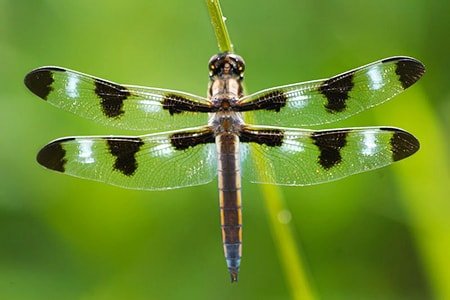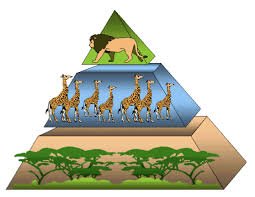Leopards are the one alongside the other exciting varieties of cats that we know of. However, there is another category of leopards whose skin shines bright black. The black eopard’s black coat coloration is due to the expression of recessive genes, while jaguars’ coat coloration is due to dominant alleles. A specific set of alleles induces the creation of huge amounts of the dark pigment melanin in the fur and skin of each species. Individuals with entirely black coats are uncommon, despite the fact that melanin concentrations vary widely among members of the same litter.
Why some leopards are black?
-The black color variants of cats like leopards, jaguars and ocelots are known by experts as “melanism.” Over the years, researchers came up with a handful of hypotheses to explain why some wild cat species have these darker coats. The black leopards are likely better concealable at night, but the variant may also allow cats to warm faster in the sun or even ward off certain parasites. But the trouble with being an all-black cat, a new study in PLOS ONE suggests, is that markings critical to feline communication become obscur.
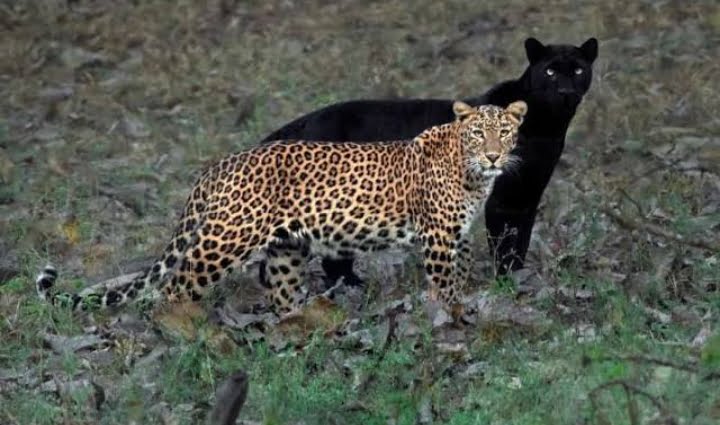
The scientific community noted that the black individuals lacked the white patches present on the others while investigating the behaviors of the southern tigrina in Brazil—a wild species equal in size to a housecat. “We assumed that these white markers might have a role in visual communication during the night,” Graipel explains, because white is the most light-reflecting hue.
The charisma of black leopards
Leopards, especially the black leopard, are enigmatic creatures. They blend into the shadows and are practically undetectable in the dark thanks to an unusual mutation of the normally spotted carnivore’s coat. However, the black fur that enhances stealthiness may come at a cost to communication, and new findings may explain why all-black cats in the wild are uncommon.
Mother cats, for example, can raise their heads and lengthen their ears to reveal the white spots to warn their young of impending danger or to remain silent if prey is nearby. “It was as if you put your foot down on the brake to alert people behind you that there seems to be trouble ahead,” Graipel says.
Certainly, black cats did not favor to cover of darkness as much as other cats. “There was really no variation in melanistic and spotted individuals’ day and night activities,” Graipel explains. The black coat color can be used as camouflage at any time, but this is where the trouble lies. When a black cat meets a spotted cat, it may be difficult for them to communicate.
Responsive behaviour
Cats interact with each other using a variety of cues, including pungent odors and chirps and growls. However, visual communication is also important. Spotted cats’ white patterns on their ears and tails can convey a variety of messages, ranging from friendly intention to slow down. Cat coat color is influenced by more than just one favorable or restrictive characteristic. Camouflage and communicating can be in competition at times, which creates an evolutionary challenge.
“If the presence of white markings behind the ears is so critical for feline silent visual communication,” Graipel argues, “hat would felines be like if the white markings were not caused by a mutation?” The story of how the leopard gained its spots isn’t just a folktale; it’s a persistent evolutionary puzzle. The researchers looked at 40 different cat species, 15 of which have black coat variations. They also looked at whether the cats were active predominantly during the day, at night, or both, and whether they had visible white markings that could be efficient to communicate with other cats of the same species.
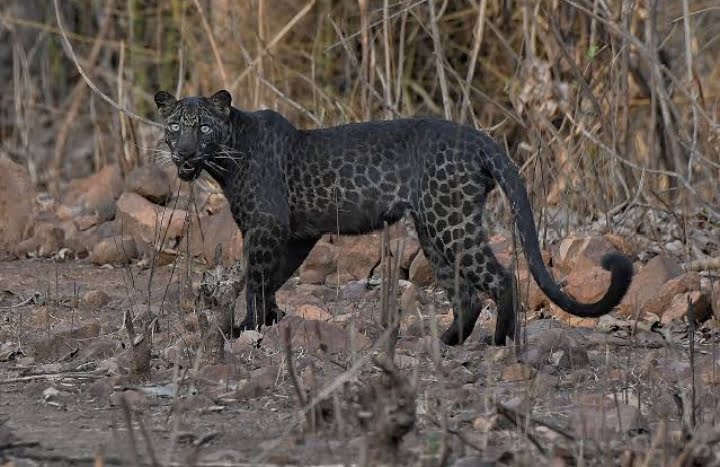
Invisibility range
Melanistic cats are not as black as a moonless night. Often, their spots are still visible. But black leopards, jaguars and other wild cats lack the white markings on their ears and tails that other members of their species often use to signal to each other. This inability to communicate with other cats, zoologist Maurício Graipel of the Federal University of Santa Catarina in Brazil and colleagues argue, raises difficult challenges for the black cats. Even though the study has implications for larger, famous felids, the inspiration for the research came from a smaller cat.
While studying the habits of the Southern Tigrina in Brazil, a wild species similar in size to a housecat, the research team noticed that the black individuals lacked the white spots seen on the others. “Since white is the most light-reflecting color. Scientists considered that these white marks might play a role in visual communication during the night.”
Habitat of Black Leopards

Black panthers are found primarily in South and Southeast Asia’s hot, deep tropical rainforests.
-They are mostly available in southwestern China, Burma, Nepal, southern India, Indonesia, and Malaysia’s southern half. Leopards with darker coats are more numerous than leopards with lighter coats. They are much less prevalent in equatorial Africa, but have been documented from Ethiopia, Mount Kenya’s forests, as well as the Aberdares; nonetheless, there is a small population in these places. Black panthers can eat a wide variety of animals, which is one of the reasons they can exist in such a diverse range of environments. Their diet consists of a variety of animals, reptiles, and birds that dwell in a variety of habitats.
Despite radio-tracking and scat studies in West Africa revealed the rainforest’s leopards seem to be more inclined to be diurnal, leopards are nocturnal, hunting at night and sleeping during the day (day active). Leopards are lonely and dominant adults who will only associate for the sake of mating. The marking of a territory with urine and feces, as well as scratching the bark of trees, are used to indicate the occupation of a territory. Leopards exhibit strong parental attachments despite the fact that they are solitary creatures who do not live in families. But since the children become self-sufficient at around 22 months. The mother may keep sharing prey with them until they are completely self-sufficient. The leopard hunts in a feline-like manner, prowling and setting traps for its victim.
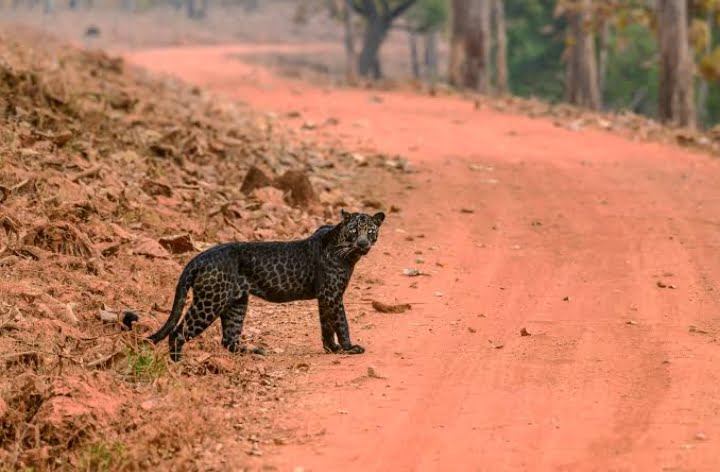
Physical features of Black Leopards
A prey/kill is frequently hauled away from all the other predators and placed in trees. Where lions and hyenas cannot access it. Leopards are known for their strength. And they can carry a carcass that weighs more than their own weight up a tree trunk. The muscles linked to the scapula are quite strong, allowing them to climb trees with ease. Because of its enormous power, a large adult leopard may kill prey weighing up to ten times its own weight.
A leopard’s head and body length are usually between 37 and 65 inches, with a tail length of 24 to 43 inches. Shoulder height ranges from 18 to 31 inches. Males weigh roughly 30% more than females, ranging from 66 to 200 pounds vs 51 to 130 pounds for females. Melanistic leopards (dark brown leopards) are commonly referred to as black panthers. However, such an animal does not exist. A recessive gene causes the dark hue, known as melansim. Melanistic cubs can be born to parents who are spotted. The black leopard, despite being melanistic, does have the same spotted pattern as any other leopard. There are no huge cats that are completely black. The Latin name “Panthera” is used to denote the genus and species of numerous huge cats. It is called Panthera tigris for tigers and Panthera leo for leopard.
Why Black Leopard is Rare?
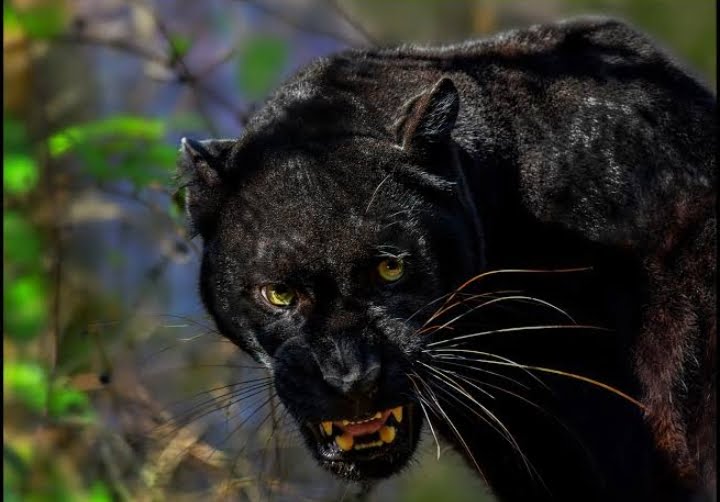
Despite being smaller than other Panthera species, they are capable of capturing huge prey thanks to their massive heads and powerful jaw muscles. Click here, for more information.
Although they appear solid black at first glance, their speckled pattern is discernible when viewed from the sharp angle. Leopards can perceive five times as many frequencies as humans, including mice’s ultrasonic squeaks.
They are the largest cats capable of climbing trees on a regular basis. The leopard has short legs and a lengthy body with a huge cranium when compared to other Felidae family members.
They have the ability to run at speeds of over 36 mph, leap over 20 feet horizontally, and jump up to 10 feet vertically. Grunts, roars, growls, meows, and sawing sounds are among the vocalizations made by leopards.
Ecology and Conservation
Every subspecies of leopard would either be vulnerable or compromised. Leopard-skin coats were permitted for a long time and are still being sold illegally now. Many trees in leopard habitats have set up for construction purposes. Leopards are still being killed for their whiskers by poachers. Furthermore, because leopards prey on cattle, ranchers frequently poison them to safeguard their livestock. Leopards are protected under the Endangered Species Act of the United States and the Convention on International Trade in Endangered Species (CITES), as well as wildlife parks in their home nations.
Reproductive tendencies of a black leopard
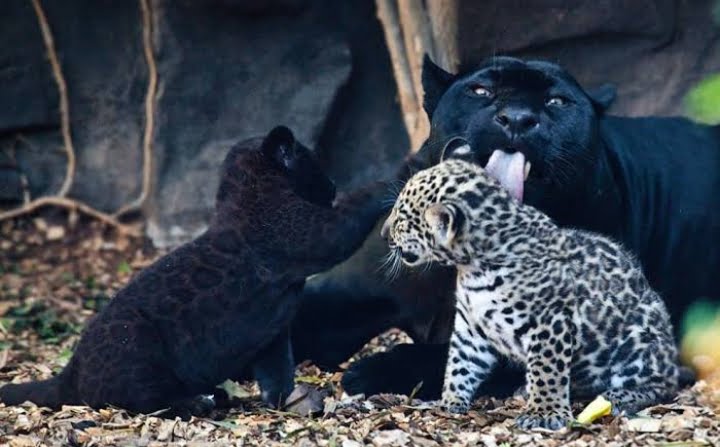
Leopards can reproduce at any time of year. The female is in warmth for 6 to 7 days during her reproductive phase, which should last 46 days. The gestation period is three to three and a half months. The proportion of cubs born might vary from one to six, although the average batch is two to three. The death rate of cubs during their first year is estimated to be between 40 and 50 percent. Cubs are born with their eyes closed, and they open 4 to 9 days later. Leopard young can possibly care for themselves at one year of age, but they must stay with their mother for another 18 to 24 months.
At the age of three, the animal reaches maturity. Leopards can live up to 23 years in captivity and 12 to 15 years in the wild. Leopards can consume any warm-blooded prey. From mice and hares to huge antelope, and have a wider range of prey than other Panthera species. A leopard, on the other hand, is the ultimate opportunist, eating birds, reptiles, rodents, and even insects. They choose their prey by looking for small herds, dense habitat, and little injury risk. Despite being smaller than other Panthera species, they are capable of capturing huge prey thanks to their massive heads and powerful facial bones.
Black leopards spotted around the world
Pilfold’s team captured a flurry of images and video recordings of the swift animal moving in the dark, its eyes twinkling like two sparkling marbles in the night.
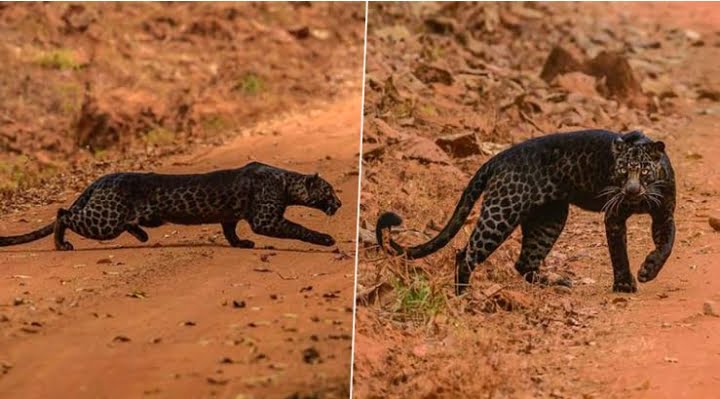
Last year, Pilfold said that his team of biologists had set remote cameras near a reserve area in Laikipia County to track the leopard population when they got reports of a possible black leopard sighting. He says that “We intensify our camera positioning in the area where the reports come from.” They were rewarded with many observations on their cameras within a few months. Despite reports of sightings, black leopards are still as rare on the continent, as noted by Pilfold. Melanism, a gene abnormality that causes an excessive production of pigment. Causing the leopard’s coat to be pitch black, according to Pilfold. It is the polar opposite of albinism, and while the leopard’s coat resembles black throughout the day. The rosette patterns can be seen in infrared images taken at night.
Melanism
We have datas that Melanism affects roughly 11% of leopards worldwide. But the majority of these leopards dwell in Southeast Asia. According to the San Diego Zoo, the total extent of the animal’s population fall is still unknown. However, poaching, habitat loss, prey competition, and conflict with cattle and farmers have all contributed to a severe decline in their numbers.
Pilfold is part of a San Diego Zoo team that is monitoring leopard populations in the area with the support of local partners. Including the Kenya Wildlife Service. He was astounded by the coincidence of the location of an animal. Also known as the black panther, the title of one of the year’s most popular films. Their observations happen to be extremely close to where the fictional Marvel comic country of Wakanda to be at site. Any melanistic leopard, jaguar, and other big cats are referred to as black panthers.
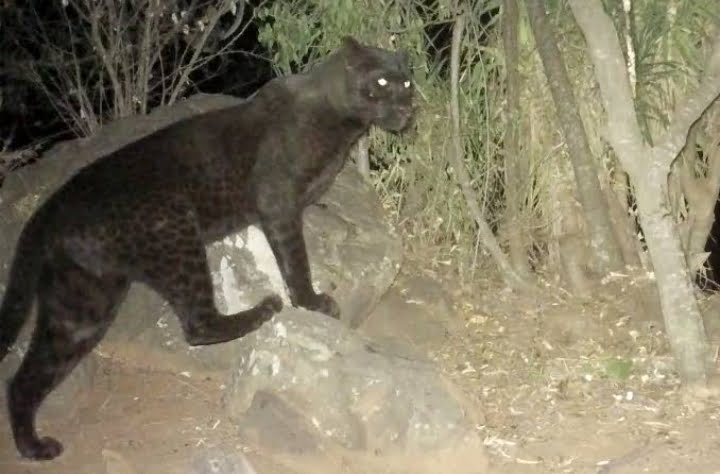
Black leopard population in India
In the Indian state of Karnataka, the Nagarhole National Park (Kabini) is located. The black leopard sightings at the Kabini Wildlife Sanctuary which is located in the southern section of the Nagarhole National Park, have become well-known in recent years. The river Kabini is the inspiration for the sanctuary’s name. Kabini’s male black leopard is named ‘Saya,’ which means’shadow.’ He is the real-life Bagheera from the classic children’s book The Jungle Book (Mowgli).
National Park of Tadoba-Andhari
The name Tadoba-Andhari National Park comes from the surrounding tribes’ worship of the god “Tadoba” or “Taru.”
Taru was a valiant village leader who was murdered by a tiger in a deadly fight. The Andhari River is the source of the name Andhari. Shadow as well as the Dark is could be the Black Leopard’s clean slate. A black leopard is sometimes known as a black panther or a jaguar, and it is thought to be a separate species. A black leopard, on the other hand, is dark in color due to a disorder known as melanism. Which affects leopards and causes their entire skin, including their spots, to turn black.
National parks
A black leopard has darker brown (or black) fur with black rosettes that are occasionally visible in good light. These panthers, sometimes known as melanistic leopards, are a type of melanism, not a different species.The Tadoba National Park is around 100 kilometers south of Nagpur, Maharashtra. It is well-known for tiger sightings, with over 80 tigers purportedly discovered in the park. Tadoba National Park is one of India’s most popular tiger attractions and the state’s largest. Tadoba, one of India’s forty national parks, has garnered enormous reputation in recent years as the best place to see tigers.
Pench National Park, a dreamlike nature reserve that preserves the recollections of Sher Khan, Baloo, Bagheera, and Mowgli, will captivate you with some of its stunning sights. The dry mixed forest is located in the southern Satpura-Maikal ranges of the Central highlands. traddling the Madhya Pradesh and Maharashtra state boundaries. The huge river Pench, which runs through and separates the two Madhya Pradesh districts of Seoni and Chindwara into nearly equal halves of the core zone, gave the region its name. The mythological tigress Collarwali is also well-known in Pench, which is probably most famous for its leopard and wild dog encounters.
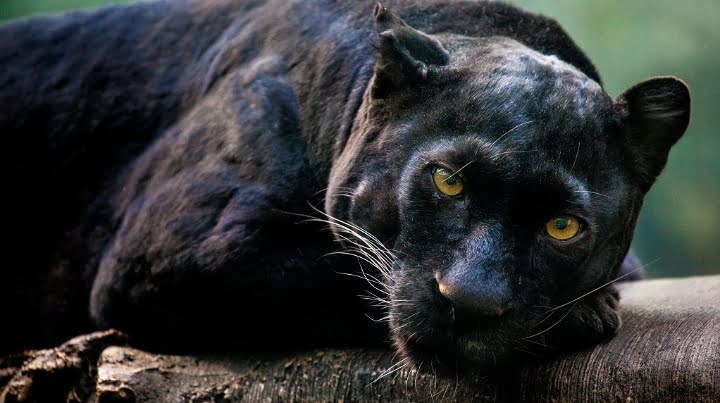
Bagheera- the first
A few visitors travelled into the Teliya zone two years ago, during the year 2020, and were grateful enough to see and film a Leopardess carrying her many babies and a black leopard. The forest authorities set up hidden cameras all around park as soon as the footage aired in the anticipation of photographing the park’s black leopard, Bagheera. The black leopard nicknamed as ‘Bagheera’ has been spotted in Teliya Zone, which is approximately 4 kilometers outside Turia Gate Pench.
Pugdundee Safaris is the gateway to the great outdoors, with sustainability at its core.
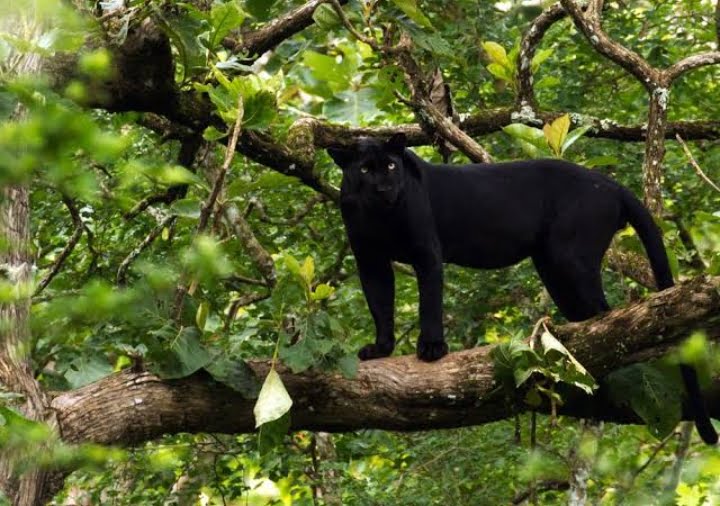
Pugdundee Safaris offers tourists the best of wildlife and environment, from its eco-friendly resorts in India’s central highlands to its responsible jungle safaris and natural experiences.
| kingdom | Animalia |
| phylum | Chordata |
| class | Mammalia |
| order | Carnivora |
| family | Felidae |
| genus | Panthera |
| species | Panthera pardus |
| speed | 58 km/h |
| average lifespan | 12 – 17 years |
Other areas of survival around India
Leopards have also begun to become familiar with the outskirts of major cities, as well as agricultural landscapes. Black leopards are to be more common in areas with significant rainfall and dense vegetation. The majority of evidence for the existence of black leopards in India comes from the North East and Western Ghats. Nonetheless, as more areas of India we explore by wildlife lovers, reports of black leopards come to in various parts of the country. The Indian Leopard (Panthera pardus fusca) dominates the Indian terrain, and the black variant of the same species is also found there. Panthera pardus fusca can be found in Nepal, Bhutan, and parts of Pakistan, in addition to India. Leopard males are bigger than leopard females.
A man’s weight ranges from 50 to 80 kilograms, whereas a woman’s ranges from 29 to 35 kilograms. Leopards have strong legs that allow them to climb trees and large boulders. With their long tails assist them balance on the branches while hunting monkeys high in the trees. Leopards are adaptable to a wide range of habitats. They are spotted easily in rainforests, deciduous forests, and alpine coniferous forests. They can also be available in semi-arid areas, with some of them in dry regions.
Use this pdf to write your essay on black leopards! {Source: ResearchGate}
FAQs
How rare is a black leopard?
Melanistic leopards and jaguars are relatively rare, with some research estimating that only about 11% of these animals have this colour. Confirmed sightings, on the other hand, are less common. And confirmed sightings of black leopards are extremely unusual, especially in Africa.
Are there black leopards?
Black panthers refer to black-coated leopards (Panthera pardus) of Africa and Asia, as well as jaguars (Panthera onca) of Central and South America black-furred variations of these species are what we call as black leopards and black jaguars.
Is the black leopard extinct?
Despite the fact that the Panther is not formally a knowledge as a separate species, many people consider it endangered due to dwindling numbers of Leopards and Jaguars. Across much of its native ranges.
How many black leopards are there in the world by 2020?
The world’s leopard population is believed to be between 12,000 and 14,000 individuals.
Why are some leopards black?
Leopards’ black coat coloration is due to the expression of recessive genes, while jaguars’ coat coloration is due to dominant alleles.
A specific set of alleles induces the creation of huge amounts of the dark pigment melanin in the fur and skin of each species. Individuals with entirely black coats are uncommon. Despite the fact that melanin concentrations vary widely among members of the same litter.
Other elements, like the angle of incident light and the animal’s life stage might affect the look of a black coat. The finer characteristics of their fur may be conceal-able by diffuse light. So certain melanistic leopards and jaguars have completely black coats. However, under direct sunshine, the coat’s modest speckled pattern may be visible.
Share with your friends



